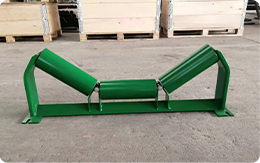 Afrikaans
Afrikaans  Albanian
Albanian  Amharic
Amharic  Arabic
Arabic  Armenian
Armenian  Azerbaijani
Azerbaijani  Basque
Basque  Belarusian
Belarusian  Bengali
Bengali  Bosnian
Bosnian  Bulgarian
Bulgarian  Catalan
Catalan  Cebuano
Cebuano  Corsican
Corsican  Croatian
Croatian  Czech
Czech  Danish
Danish  Dutch
Dutch  English
English  Esperanto
Esperanto  Estonian
Estonian  Finnish
Finnish  French
French  Frisian
Frisian  Galician
Galician  Georgian
Georgian  German
German  Greek
Greek  Gujarati
Gujarati  Haitian Creole
Haitian Creole  hausa
hausa  hawaiian
hawaiian  Hebrew
Hebrew  Hindi
Hindi  Miao
Miao  Hungarian
Hungarian  Icelandic
Icelandic  igbo
igbo  Indonesian
Indonesian  irish
irish  Italian
Italian  Japanese
Japanese  Javanese
Javanese  Kannada
Kannada  kazakh
kazakh  Khmer
Khmer  Rwandese
Rwandese  Korean
Korean  Kurdish
Kurdish  Kyrgyz
Kyrgyz  Lao
Lao  Latin
Latin  Latvian
Latvian  Lithuanian
Lithuanian  Luxembourgish
Luxembourgish  Macedonian
Macedonian  Malgashi
Malgashi  Malay
Malay  Malayalam
Malayalam  Maltese
Maltese  Maori
Maori  Marathi
Marathi  Mongolian
Mongolian  Myanmar
Myanmar  Nepali
Nepali  Norwegian
Norwegian  Norwegian
Norwegian  Occitan
Occitan  Pashto
Pashto  Persian
Persian  Polish
Polish  Portuguese
Portuguese  Punjabi
Punjabi  Romanian
Romanian  Russian
Russian  Samoan
Samoan  Scottish Gaelic
Scottish Gaelic  Serbian
Serbian  Sesotho
Sesotho  Shona
Shona  Sindhi
Sindhi  Sinhala
Sinhala  Slovak
Slovak  Slovenian
Slovenian  Somali
Somali  Spanish
Spanish  Sundanese
Sundanese  Swahili
Swahili  Swedish
Swedish  Tagalog
Tagalog  Tajik
Tajik  Tamil
Tamil  Tatar
Tatar  Telugu
Telugu  Thai
Thai  Turkish
Turkish  Turkmen
Turkmen  Ukrainian
Ukrainian  Urdu
Urdu  Uighur
Uighur  Uzbek
Uzbek  Vietnamese
Vietnamese  Welsh
Welsh  Bantu
Bantu  Yiddish
Yiddish  Yoruba
Yoruba  Zulu
Zulu Design and Functionality of Conveyor Snub Rollers in Material Handling Systems
Understanding Conveyor Snub Rollers Essential Components for Efficient Material Handling
Conveyor systems play a crucial role in modern manufacturing and logistics, providing a streamlined method for moving products and materials from one point to another. Among the various components that make up these intricate systems, the conveyor snub roller is often overlooked yet essential for enhancing performance and efficiency. This article delves into the significance of snub rollers, their function within conveyor systems, and factors to consider when selecting the right type for specific applications.
A conveyor snub roller is a specialized component that helps to increase the tension in the conveyor belt. Typically found at points where the belt needs to divert or change direction, these rollers come into play to ensure that the belt maintains proper contact with the drive pulley. The snub roller achieves this by providing an additional point of tension on the belt, thereby preventing slippage and ensuring smooth operation. This not only aids in the reliable movement of materials but also extends the lifespan of the conveyor system by reducing wear and tear.
The primary function of a snub roller is to change the angle of the conveyor belt, which facilitates tighter turns and more complex conveyor layouts. This capability is particularly beneficial in environments where space is limited, allowing for the optimization of floor space while still maintaining effective material flow. By strategically positioning snub rollers, operators can create a more compact and efficient conveyor system that minimizes the distance materials must travel.
conveyor snub roller

Moreover, snub rollers also play a vital role in the overall safety of the conveyor system. By ensuring that the conveyor belt remains securely in place, these rollers help mitigate the risk of belt misalignment, which can lead to equipment damage or even workplace accidents. Furthermore, their ability to maintain consistent tension alleviates issues related to belt slip, which can result in uneven product flow or downtime due to system failures.
When selecting snub rollers, it is essential to consider several key factors. First, the weight and type of materials being transported will influence the size and design of the snub roller required. For heavier loads, a robust roller made from durable materials such as steel or reinforced plastic may be necessary to withstand the added stress. Additionally, the roller's diameter and width must be compatible with the overall dimensions of the conveyor belt to ensure effective operation.
Another consideration is the environmental conditions in which the conveyor system operates. For instance, if the system is exposed to extreme temperatures or harsh chemicals, it is vital to choose snub rollers that can endure such conditions without deteriorating. Similarly, factors like moisture and dust levels can impact the roller's performance, making it crucial to select components designed for the specific environment.
In conclusion, conveyor snub rollers are integral to the efficiency and safety of conveyor systems. By providing additional tension and enabling tighter turns, these components facilitate smoother material handling while contributing to the longevity of the equipment. When designing or upgrading a conveyor system, carefully selecting the appropriate snub rollers based on load requirements and environmental conditions is essential for optimizing performance. As industries continue to evolve and demand more from their material handling systems, the importance of snub rollers will undoubtedly remain a vital consideration for engineers and operators alike.
-
Revolutionizing Conveyor Reliability with Advanced Rubber Lagging PulleysNewsJul.22,2025
-
Powering Precision and Durability with Expert Manufacturers of Conveyor ComponentsNewsJul.22,2025
-
Optimizing Conveyor Systems with Advanced Conveyor AccessoriesNewsJul.22,2025
-
Maximize Conveyor Efficiency with Quality Conveyor Idler PulleysNewsJul.22,2025
-
Future-Proof Your Conveyor System with High-Performance Polyurethane RollerNewsJul.22,2025
-
Driving Efficiency Forward with Quality Idlers and RollersNewsJul.22,2025





























